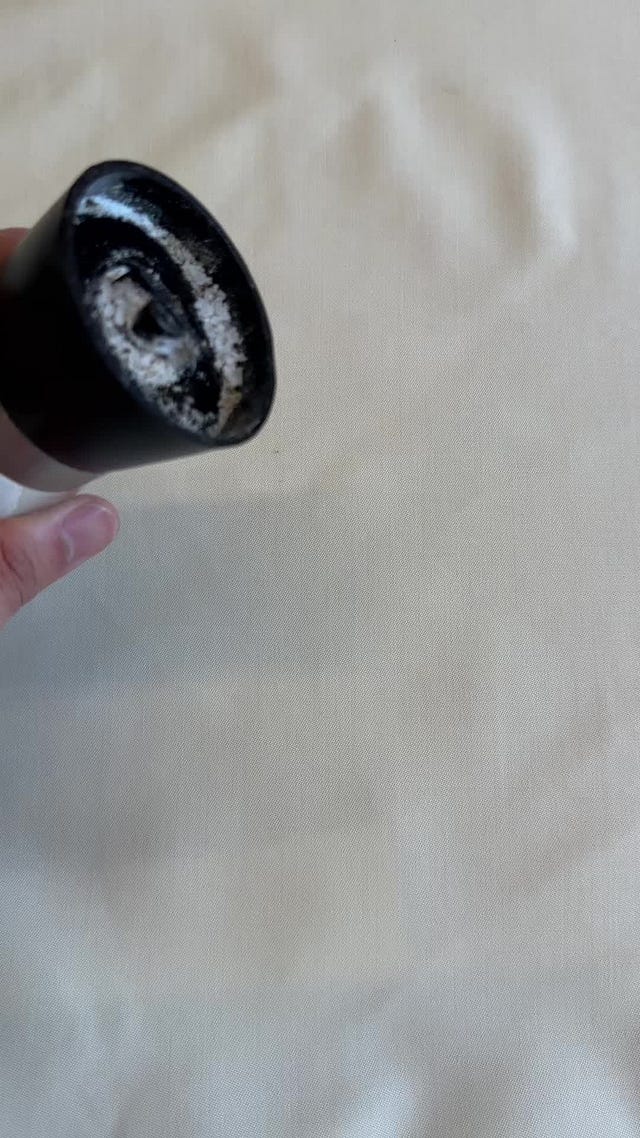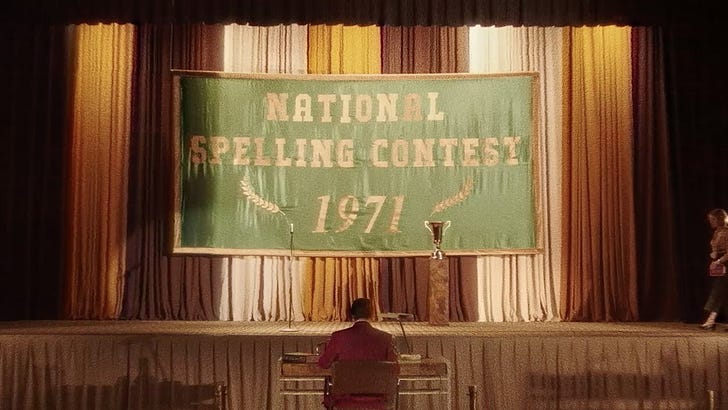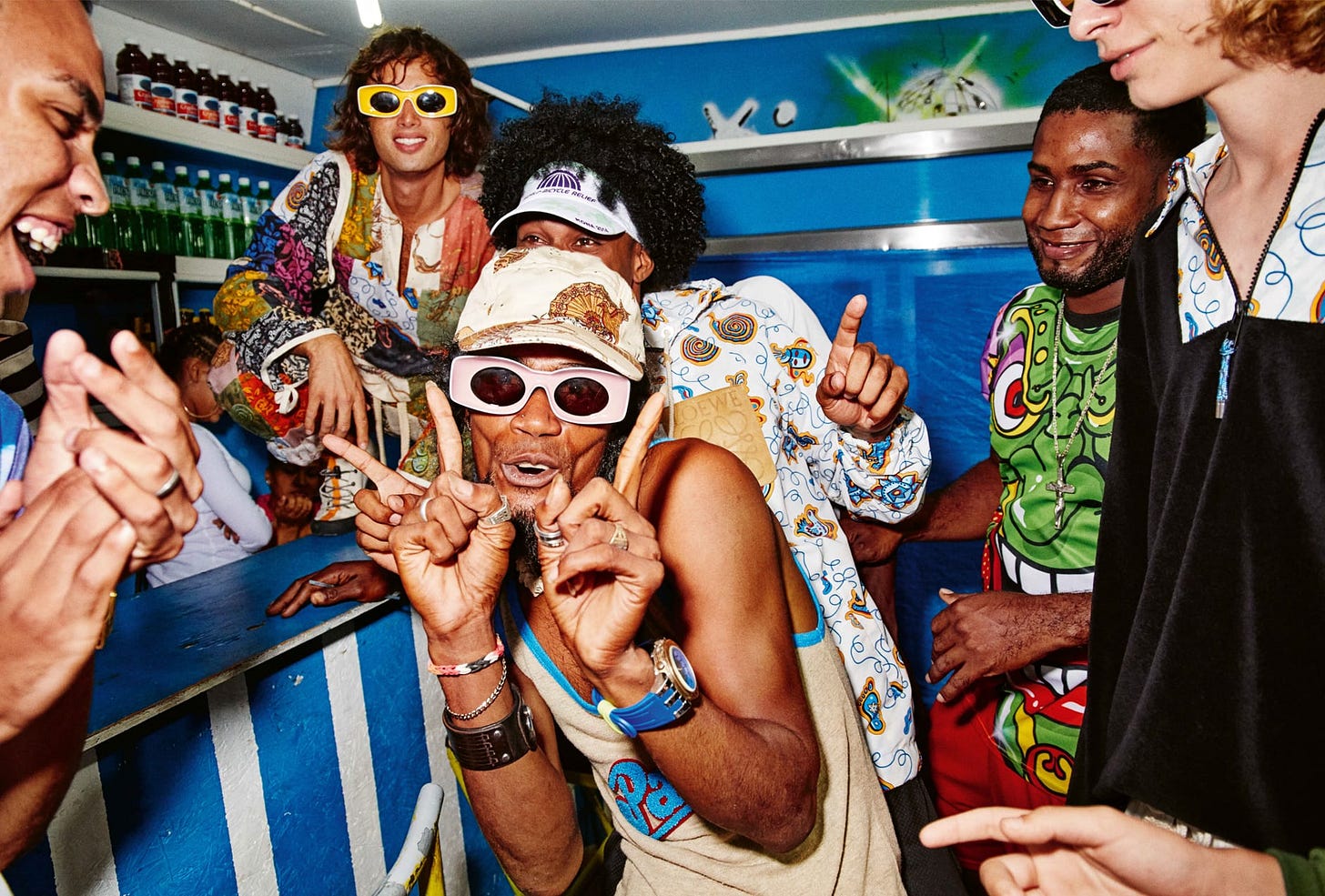A Thread about how Jonathan Anderson rejected 'cool'
At Loewe, the designer swapped elitism for something far more original
Like most fashion enthusiasts, I’ve spent a lot of time thinking about Jonathan Anderson recently. A month ago, LVMH announced that the designer was leaving Loewe, to be replaced by Jack McCollough and Lazaro Hernandez (the duo behind Proenza Schouler). On Friday, news confirmed what we already knew: Anderson is headed to Dior.
It’s rare for the fashion world to feel so unanimously misty-eyed about a designer’s departure. Often, creative directors have the opposite effect: the rabble shout and jeer on social media, throwing virtual rotten tomatoes and calling for their replacement. (With Jonathan Anderson, there were no rotten tomatoes, only Loewe tomatoes - the swan song of his 11-year reign.)
[Housekeeping: This piece might get cut off in your inbox. Click ‘read in browser’ or ‘view full message’ to see the whole thing.]
Since the announcements, I’ve been stroking my chin and pondering the essence of Anderson’s work. What was the specific attitude that connected with customers and critics in such a profound way?
I realised that it was related to the idea of ‘cool’. Or rather, the rejection of it.
Fashion is an industry predicated on exclusion - whether that’s exclusionary prices, beauty standards, or even education. Cool and exclusive go hand-in-hand; that sense of an insider club that only certain people can join.
Let’s quickly look at fashion history: the exuberance of the 80s was followed by the grunge and minimalism of the 90s, a vision of ‘cool’ that continues to dominate fashion today. But where cool was once political, linked to rejection of commercial values or subculture, these days it’s simply an aesthetic.
Still, fashion clings to cool, lusting after minimalism and chasing the diluted legacy of designers like Helmut Lang and Jil Sander.
wrote about this for the new i-D magazine, in an op-ed titled ‘Don’t Be Cool’.“In its overuse, “cool” has all but lost any tangible qualities,” she writes. “It’s a lazy designation - a catchall for undefinable ideals of superiority that has completely corrupted taste and the expression of personal style.”
I think this is why Jonathan Anderson’s Loewe was such a hit. He made cool about craft and creativity, instead of minimalism or the past. He disposed of its snobbish elitism, the version where everyone’s scared to be different, weird, or - god forbid - fun. All whilst maintaining a sense of exclusivity and aspiration, the cornerstones of any luxury house.
So how did he do it? I think there are five key ‘C’s in his strategy:
Craftsmanship
During his decade at Loewe, Jonathan Anderson made craftsmanship the beating heart of the house. Instead of leaning into the ‘you can’t sit with us’ vibe, his brand of exclusivity was focused on skills: leatherwork that could only be performed by a handful of artisans, meticulous processes that took hundreds of hours, ceramics techniques passed down through generations. The exclusivity factor comes from the fact that these skills are so hard to come by - not because of some invisible hierarchy of ‘cool’. He swapped the exclusionary for the extraordinary, creating a sense of wonder, instead of insecurity.
Celebrity
Loewe also carved its own distinct lane when it came to celebrities. Once again, there’s something about their strategy that felt both elevated and inviting. There was a friendly, boisterous quality to the stars that Anderson partnered with. They’re Zeitgeisty and desirable, but not austere.
Think about last year’s Met Ball gang - who didn’t want to be on that bus? Same goes for the Queer Venice boat ride. Anderson’s posse doesn’t feel like a snooty or intimidating crowd. Instead, it looks genuinely fun.
When Anderson put the late Maggie Smith in a campaign, it felt both new and nostalgic. Smith’s face tickled a generation who had grown up seeing her in films like Harry Potter, or my personal favourite, ‘Keeping Mum’ (in which she plays a murderous grandmother determined to fix Rown Atkinson’s marital issues by popping off various characters in the village).
Similarly Daniel Craig and his funny hairdo - James Bond goes fashion, with a whiff of eccentric uncle. Stars appeared amongst tiny houses and in bathtubs, situated in a world that was immersive and original, but never took itself too seriously, either.
Communications
When TikTok first started getting big, most high end brands were scared to touch it. The platform was too chaotic and DIY - how could the language of luxury possibly translate? Enter: Loewe. Instead of trying to impose a traditional communications strategy onto the platform, or sanitising their content for a luxury audience, the brand went all in.
 Tiktok failed to load.
Tiktok failed to load.Enable 3rd party cookies or use another browser
They invited creators to do what they did best, sprinkling them with Loewe fairy dust rather than stifling them in house codes. This meant Logan slicing a cucumber, Kristy Sarah testing the sound of different Loewe shoes, dads unboxing bags and (my favourite) Ayamé narrating the Salone exhibition. They played into trends, and even got Jonathan Anderson to do a Loewe-themed ‘would you rather’. On their campaign shoots, they eschewed the usual polished BTS, instead asking stars to sniff Play Doh and do fit checks with knights.
In 2024, Anderson also collaborated with Schitt’s Creek actor Dan Levy on a short film called ‘Decades of Confusion’, starring The White Lotus’ Aubrey Plaza. Cycling through outfits pulled from Loewe’s archive, the film simultaneously showcases decades of design, whilst also poking fun at the house’s unpronounceable name.
Collaborations
Under Anderson, Loewe’s collaborations were an equal balance of whimsical, elevated and inclusive, playing in pockets of culture that were niche, but not aloof.
In 2019, Anderson brought Paula’s Ibiza into the fold, a boutique famous for its bright, hippie-esque garments that were synonymous with Baleriac party paradise. Loewe might be serious about craft, but they like to have a good knees-up, too.
Two years later, Loewe launched the first of three collaborations with the beloved Japanese filmmaker, Studio Ghibli, releasing a playful collection of pieces printed with characters from the films My Neighbour Totoro, Spirited Away, and Howl’s Moving Castle (I actually interviewed fans at the launch back in 2023).
In May last year, they also debuted a collaboration with On, the sportswear giant that approaches its communications with a similar balance of playfulness and technical prowess (see: Elmo, but also Cloudboom Strike).
Clothes!
And finally, the clothes themselves! Who knew craft could have such a quirky sense of humour? Anderson’s collections celebrated wit and entertainment, bringing a silly side to the self-seriousness of fashion week, without ever losing his edge. Whether it was trousers pulled up to the nipples, pixelated hoodies, broken egg heels, giant buckles or dresses wrapped over kiddy cars, the clothes were always beautiful, subversive and decidedly tongue-in-chic.
Balloons were squished onto dresses and beneath the heels of shoes, whilst one luxurious leather coat was pulled up at the back, attaching to the wearer’s bag and revealing a butt cheek, as if she’d accidentally tucked it into her underwear.
The magic of Jonathan Anderson’s Loewe was that he freed us from the tight corset of cool, inviting his audience to play in a world of warmth, experimentation and self-expression. His brand of cool was about wit and daring; making us dream and desire, whilst nudging us gently in the ribs. Ultimately, he helped fashion loosen up. I hope that his Dior does the same.
Have you listened to the Threads of Conversation podcast? You can also find it on Apple, Spotify, and YouTube. You can also follow Threads of Conversation on Instagram and TikTok. Subscribe below for more podcasts, essays and interviews.
Loose Threads
Did Doechii’s stylist read this newsletter?
Walked around my local park listening to The Cutting Room Floor’s new two-hour-long podcast episode with Telfar. So. Good. You need to subscribe to the paywalled Patreon to listen - you won’t regret it. (Also, sign up via your browser, as doing so via the Apple Store will cost you more).
An artist I really loved, Cola Boyy, passed last year. His new single is some of the unreleased music he left behind. Go have a listen.
Buckle up, fashion fans. It’s going to be quite a year.
Start your own Thread
Do you have a favourite Loewe moment? And what do you think Jonathan Anderson’s Dior will look like?











I remember listening to a podcast (either BoF or Matches) with him just after Covid and he deflected anything about his talent by talking about the artisans he worked with and how much he had learnt from them. It just made me admire him even more.